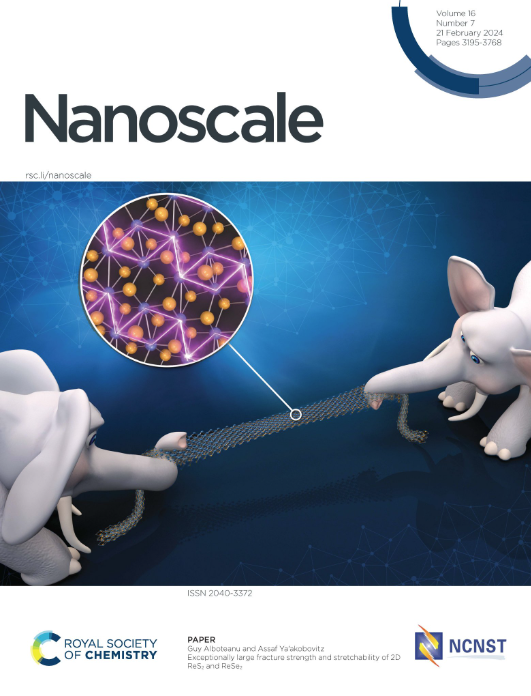Femtosecond Laser Constructed Bioinspired Gradient Wedge-Shaped Surfaces for Under-Oil Liquid Self-Transport
IF 5.1
3区 材料科学
Q1 CHEMISTRY, MULTIDISCIPLINARY
引用次数: 0
Abstract
The spontaneous transport of liquids holds significant application potential in biomedicine, heat dissipation, microfluidic chips, and so forth. Particularly, the under-oil liquid self-transport is a significant pathway for manipulating the volatile liquids. Although numerous functional surfaces have been developed to facilitate the directional self-transport of liquids (e.g., water, oil) in the air, reports on the self-transport of liquids in oily environments remain scarce. Herein, inspired by the lotus leaves and cactus spines, we propose a bionic superwetting gradient wedge-shaped surface (SGWS) for under-oil self-transport of liquids. The SGWS was fabricated through a combination of femtosecond laser texturing and hydrophobic modification. The as-prepared SGWS can achieve fast and continuous self-transport of a single droplet under-oil, exhibiting a maximal transport velocity of over 250 mm/s and transport distance of over 150 mm. The effect of wedge-shaped angle, inclined angle, and surface tension on the self-transport behavior of liquid on the SGWS was systematically investigated and the underlying mechanism was revealed. Furthermore, the potential applications of the SGWS in complex fluid manipulation, droplet microchemical reactions, cargo transport, and oil surface particles collection were explored in detail. This work offers a novel strategy for realizing under-oil liquid manipulation without energy input, showing promising applications in the industry.飞秒激光构建油下液体自输运生物启发梯度楔形表面
液体的自发输运在生物医学、散热、微流控芯片等领域具有重要的应用潜力。特别是油下液体的自输运是控制挥发性液体的重要途径。尽管已经开发了许多功能表面来促进液体(例如水、油)在空气中的定向自输运,但关于液体在含油环境中的自输运的报道仍然很少。在此,受荷叶和仙人掌刺的启发,我们提出了一种用于液体在油下自运输的仿生超湿梯度楔形表面(SGWS)。该材料采用飞秒激光变形和疏水改性相结合的方法制备。所制备的SGWS可以实现单液滴在油下的快速连续自输,最大输运速度超过250 mm/s,输运距离超过150 mm。系统研究了楔形角、倾斜角和表面张力对液体在SGWS上自输运行为的影响,并揭示了其潜在机制。此外,还详细探讨了SGWS在复杂流体处理、液滴微化学反应、货物运输和油表面颗粒收集等方面的潜在应用。这项工作为实现无能量输入的油下液体操纵提供了一种新的策略,在工业上具有广阔的应用前景。
本文章由计算机程序翻译,如有差异,请以英文原文为准。
求助全文
约1分钟内获得全文
求助全文
来源期刊

Nanoscale
CHEMISTRY, MULTIDISCIPLINARY-NANOSCIENCE & NANOTECHNOLOGY
CiteScore
12.10
自引率
3.00%
发文量
1628
审稿时长
1.6 months
期刊介绍:
Nanoscale is a high-impact international journal, publishing high-quality research across nanoscience and nanotechnology. Nanoscale publishes a full mix of research articles on experimental and theoretical work, including reviews, communications, and full papers.Highly interdisciplinary, this journal appeals to scientists, researchers and professionals interested in nanoscience and nanotechnology, quantum materials and quantum technology, including the areas of physics, chemistry, biology, medicine, materials, energy/environment, information technology, detection science, healthcare and drug discovery, and electronics.
 求助内容:
求助内容: 应助结果提醒方式:
应助结果提醒方式:


